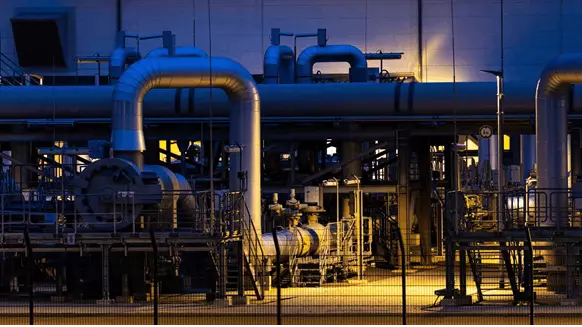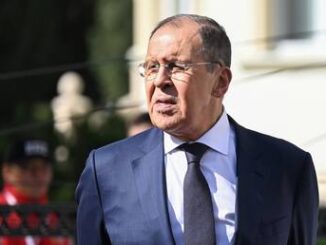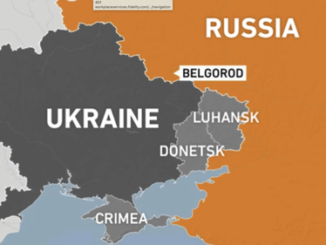
Russia began sending natural gas to Europe through the Nord Stream pipeline system after a pause, bringing relief to a continent whose economy is starting to wobble under the strain of reduced supplies.
Shipments returned to 40% of capacity, their level before flows were halted for 10 days of planned maintenance, data from the pipeline operator showed. Still, there is little expectation of a full revival of supplies amid issues related to gas turbines for the link.
Natural gas prices initially slumped as much as 6.5% before paring their losses, as many traders and analysts expected exports wouldn’t restart. Supplier Gazprom PJSC declined to comment.
The resumption of exports will provide some relief for the continent that’s racing to store the fuel before the winter. For now, it may also ease fears about massive economic damage to the European Union, which have already sent the euro tumbling to trade around parity with the US dollar.
“The resumption this morning of flows along Nord Stream is likely to lead to a collective sign of relief from not just the European gas market, but from the wider economy,” said Tom Marzec-Manser, head of gas analytics at ICIS in London.
Moscow has been curbing gas shipments to Europe for months, but the continent still relies on the little it’s getting to fill the retired salt caverns, aquifers and fuel depots that hold its fuel inventories. Without Russian gas, Europe is unlikely to have enough supply to warm homes and keep the lights on throughout the winter.
Policy makers had prepared for the worst, with the European Union on Wednesday unveiling a plan to try to curb gas consumption by 15%. Budget Commissioner Johannes Hahn even said he didn’t expect the pipeline to come back.
European gas prices fell to a low of 145 euros a megawatt-hour when the market opened, before trading 2.9% lower at 150.50 euros by 10:13 a.m. in Amsterdam.
Still, the “political uncertainty and the 60% cut from mid-June remain,” Klaus Mueller, head of German regulator BNetzA, said on Twitter.
Russian President Vladimir Putin has indicated that flows could fall to 20% as soon as next week. Only two turbines at a compressor station in Russia, which feeds the pipeline, are currently working, he said, and one of them needs to go for maintenance this month. Flows could drop unless a replacement component sent from Canada arrives in Russia soon, following sanctions-related delays, according to Putin.
“There is still plenty of uncertainty over how flows will evolve in the coming weeks and months,” said Warren Patterson, head of commodities strategy for Dutch bank ING Groep NV, who expected prices to fall this morning. “So, the market will still have to price in a fairly large risk premium.”
Many have argued that Russia has more leverage if it keeps Europe guessing.
“Sending flows, but at capped levels, runs in Russia’s favor,” Tim Partridge, head of energy trading at DB Group Europe, said in a report on Wednesday. “It allows the Kremlin to continue to use the pipeline as a way of increasing volatility, while still reaping immense profits on inflated energy prices.”
European gas prices have surged over the past year, climbing to a record shortly after Russia invaded Ukraine. While prices have eased since then, they are still several times higher than the average of the past five years, boosting costs for consumers already contending with higher prices of everything from food to fuel.
Source: Rigzone.com



